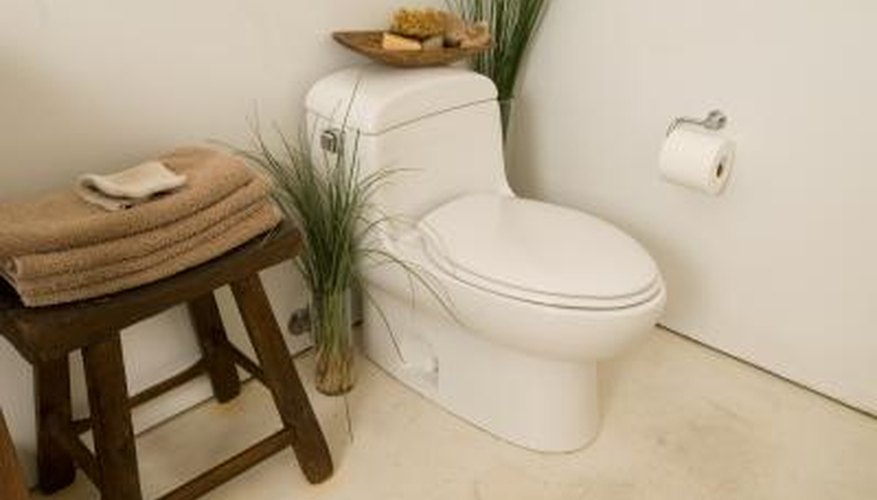Smelling sewage when you flush your toilet is a sign that your toilet is either damaged or needs some type of maintenance. The problem should be addressed immediately to avoid costly repairs, which can range from replacing the toilet to fixing water damage caused by an overflow.
Dirty Toilet Bowl Rim
Sewer organisms sometimes can enter the house through your toilet trap. Typically this is an easy to fix cause of sewage odour when you flush the toilet. To eliminate the smell pour bleach into the overflow pipe of the flush valve in your toilet tank. This will disinfect the rim of your toilet bowl, where the organisms like to hang around.
- Sewer organisms sometimes can enter the house through your toilet trap.
- Typically this is an easy to fix cause of sewage odour when you flush the toilet.
Broken Seal
Beneath your toilet there is a wax seal ring that seals in water and odour. If you notice a sewage smell when flushing, check your toilet's base. If it rocks or feels spongy when you sit on the toilet, the wax seal may be damaged. Replace the seal, which can be purchased at any hardware store, and the smell should go away.
- Beneath your toilet there is a wax seal ring that seals in water and odour.
- If it rocks or feels spongy when you sit on the toilet, the wax seal may be damaged.
Clogs
A build up of waste or a foreign object flushed down the drain can cause your toilet to develop a foul odour when it is flushed. The material builds and each time the water is flushed away, it allows the gases from the clog to enter the room. For minor clogs, where you're still able to flush the toilet effectively, use a plunger. If this doesn't remove the smell, try snaking the toilet to remove the clog. If you can't get it out this way, you may have to call a plumber. As the clog gets worse, your problems will go beyond the odour. The toilet may overflow and flood your bathroom in dirty water or the clog may cause damage to your toilet inside.
- A build up of waste or a foreign object flushed down the drain can cause your toilet to develop a foul odour when it is flushed.
- For minor clogs, where you're still able to flush the toilet effectively, use a plunger.
The bathroom vent also may be clogged by something outside, like a bird's nest or leaves. Sometimes in colder climates, a vent that is too small can clog because of frost forming inside. To clear away clogs in the vent, run a snake down the vent pipe from your roof or flush out the clog using a garden hose. Often this is best left to a professional plumber to avoid accidents.
Cracks
Check the water level in your toilet bowl. If it is lower than normal, then you might have an internal crack in the toilet. Cracks inside your toilet will allow water to slowly leak. This causes the water level to decrease, which lets sewer gas enter the room when you flush as not enough water is left in the trap to block the gasses. Usually a cracked toilet isn't repairable and will have to be replaced.
- Check the water level in your toilet bowl.
- If it is lower than normal, then you might have an internal crack in the toilet.
Evaporated Water
Toilets that are used infrequently, such as those in a basement or at a cottage, can develop a rotten odour because the water in the bowl and trap evaporates. When the water isn't present, sewer gases can enter through the toilet. To eliminate the odour, flush the toilet regularly even if it hasn't been used. This keeps fresh water in the bowl and prevents it from evaporating completely.
- Toilets that are used infrequently, such as those in a basement or at a cottage, can develop a rotten odour because the water in the bowl and trap evaporates.
- To eliminate the odour, flush the toilet regularly even if it hasn't been used.
